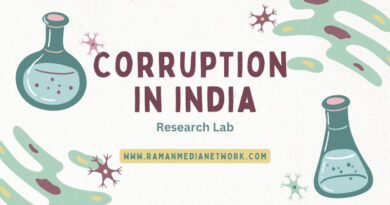How AI Can Help Build Better Public Services: A Guide for Students

How AI Can Help Build Better Public Services: A Guide for Students
The research paper proposes a comprehensive 10-step strategic framework for governments to follow. This plan is designed to be phased, responsible, and unified, ensuring that AI is adopted in a way that is both effective and ethical.
By Rakesh Raman
New Delhi | October 24, 2025
Introduction: A New Tool for an Old Problem
For developing nations like India, Artificial Intelligence (AI) is not just a technological upgrade; it’s a strategic tool for overcoming major governance challenges. Governments in these countries often face a profound dual challenge: serving a massive and growing population while struggling with inefficient, manual bureaucratic systems that are ill-equipped for the task.
To tackle this, the paper argues that the goal is no longer just to improve old systems, but to fundamentally reimagine them.
The framework’s primary objective is to guide governments in transitioning from reactive, one-size-fits-all service models to proactive, personalized, and predictive systems.
These old systems create significant, everyday problems for citizens. Let’s explore what those challenges look like on the ground.
1. The Governance Challenge: Everyday Problems for Millions
Traditional government systems, characterized by manual processes and siloed information, often struggle to deliver essential services effectively and at the required scale. This strain is felt across the most critical sectors of society.
Key Sectors Under Strain
Healthcare: Citizens, particularly in rural areas, suffer from an acute shortage of medical professionals. This results in poor maternal and child health outcomes and high out-of-pocket expenditures for families.
Education: The system struggles with the challenge of scalability, making it difficult to ensure that every student can receive quality, personalized learning, regardless of their location.
Transport and Infrastructure: Legacy systems are unable to effectively manage growing urban congestion, optimize public transit schedules, or perform the necessary preemptive maintenance on critical public assets like roads and bridges.
The core issue underlying these problems is a reliance on manual processes and “entrenched data silos” where information is trapped within individual government departments. This fragmentation creates a lack of real-time insights, rendering these systems ill-equipped to address systemic inefficiencies at the required scale. So, how can technology—specifically AI—offer a new way forward?
2. The AI Solution: From Reactive to Predictive Governance
AI offers a fundamental shift in how public services can be delivered. Instead of reacting to problems after they occur, governments can use AI to anticipate citizen needs, tailor services to individuals, and allocate resources with far greater precision.
The table below contrasts the old approach with the new possibilities powered by AI.
|
Traditional Approach |
AI-Powered Solution |
| In Education, a “one-size-fits-all” curriculum is used for all students. | AI tutors and adaptive platforms analyze a student’s real-time progress to deliver personalized curricula and support, helping bridge learning gaps. |
| In Healthcare, services are often reactive and hard to access in remote areas. | AI can analyze diverse datasets—including satellite imagery, weather patterns, and public health data—to forecast disease outbreaks and bring expert-level diagnostic tools to remote villages. |
| In Infrastructure, maintenance happens after a failure. | AI uses computer vision to monitor assets like roads and bridges, enabling preemptive maintenance that prevents costly failures from happening. |
Beyond improving core services, AI can also enhance government integrity and accessibility by:
Detecting fraud by analyzing vast datasets to flag corruption and safeguard public resources.
Using chatbots for basic citizen engagement, providing information and answering routine questions automatically.
To achieve these transformative benefits, however, a clear and responsible plan is necessary.
3. The Roadmap: A 10-Step Framework for Responsible AI
The research paper proposes a comprehensive 10-step strategic framework for governments to follow. This plan is designed to be phased, responsible, and unified, ensuring that AI is adopted in a way that is both effective and ethical.
- Foundation – Establish Centralized Al Governance: This is crucial to prevent duplicated costs and incompatible data architectures, ensuring all AI projects work together towards national goals.
- Infrastructure – Build the Data Backbone: This step is essential for breaking down data silos between departments to enable the creation of high-quality, reliable AI models.
- Human Capital – Launch Mass Skilling Initiatives: This ensures the country has its own experts who understand the local context to build and manage AI, reducing reliance on foreign talent.
- Risk Assessment – Classify Al Risk Levels: This allows the government to focus its strictest safety reviews and ethical oversight on the AI systems that can most affect people’s lives, like those used in judicial decisions.
- Pilot & Prove – Invest in High-Impact ANI Pilots: Starting with small, measurable projects in areas like epidemic forecasting helps prove AI’s value and provides critical lessons before expanding nationwide.
- Transparency – Mandate Explainable AI (XAI): This builds public trust by ensuring government decisions are not “black boxes,” which is a vital political strategy to build and maintain public legitimacy, especially in low-trust environments.
- Privacy – Establish Data Trust Frameworks: This protects citizen privacy by using robust legal frameworks and privacy-preserving technologies, which is necessary to earn the public’s ‘social license’ to use their data for the public good.
- Partnerships – Foster Public-Private-Academia Collaboration: This helps the government innovate faster by harnessing private and academic expertise within controlled regulatory sandboxes, safely testing new solutions before a national rollout.
- Resource Allocation – Ensure Equitable Access: This step’s goal is to use AI to reduce inequality, not increase it, by prioritizing solutions for marginalized communities, such as multi-lingual interfaces.
- Continuous Review – Implement Oversight and Audit Mechanisms: This ensures AI systems are checked via annual, independent audits to monitor for performance decay or emergent bias, keeping them aligned with the public interest over time.
This detailed roadmap links today’s practical actions to the bigger picture and the long-term future of AI.
4. Building a Foundation for the Future
To understand the long-term strategy, it’s important to know the difference between the two main stages of AI development:
Artificial Narrow Intelligence (ANI): This is the AI of today. ANI systems are designed to perform a single, specific task exceptionally well, like analyzing a medical scan or optimizing traffic lights.
Artificial General Intelligence (AGI): This is the aspirational goal of AI research. An AGI would possess human-level cognitive abilities to learn, reason, and apply knowledge across a wide range of different tasks without being reprogrammed. For instance, a true AGI could simultaneously optimize a nation’s transport, public health, and food supply chains, adapting to new challenges on its own, much like a human expert.
The paper’s key strategic advice for developing nations is to pursue a pragmatic dual-track approach. The government must focus on mastering ANI today to solve urgent public challenges, while the 10-step framework simultaneously builds the ethical and data foundation required to responsibly manage the immense complexity of a potential AGI future.
By following this structured approach, governments can build a solid foundation to make public services truly efficient, equitable, and accountable for every citizen.
By Rakesh Raman, who is a national award-winning journalist and social activist. He is the founder of a humanitarian organization RMN Foundation which is working in diverse areas to help the disadvantaged and distressed people in the society.
As a technology and AI expert, his professional focus is on applying emerging AI and digital technologies to enhance decision-making, operational efficiency, transparency, and democratic participation in governance, media, and business systems. You can click here to view his full profile.
Rakesh Raman | LinkedIn | Facebook | Twitter (X)
💛 Support Independent Journalism
If you find RMN News useful, please consider supporting us.



![Children demonstrating in the streets of New Delhi so that the Indian government should protect them from dust pollution, noise pollution, and air pollution of extended FAR construction activity in occupied housing societies. Photo and Campaign by Rakesh Raman [ Click the photo to know the details. ]](https://www.ramanmedianetwork.com/wp-content/uploads/2017/04/dwkpol1-390x205.jpg)
